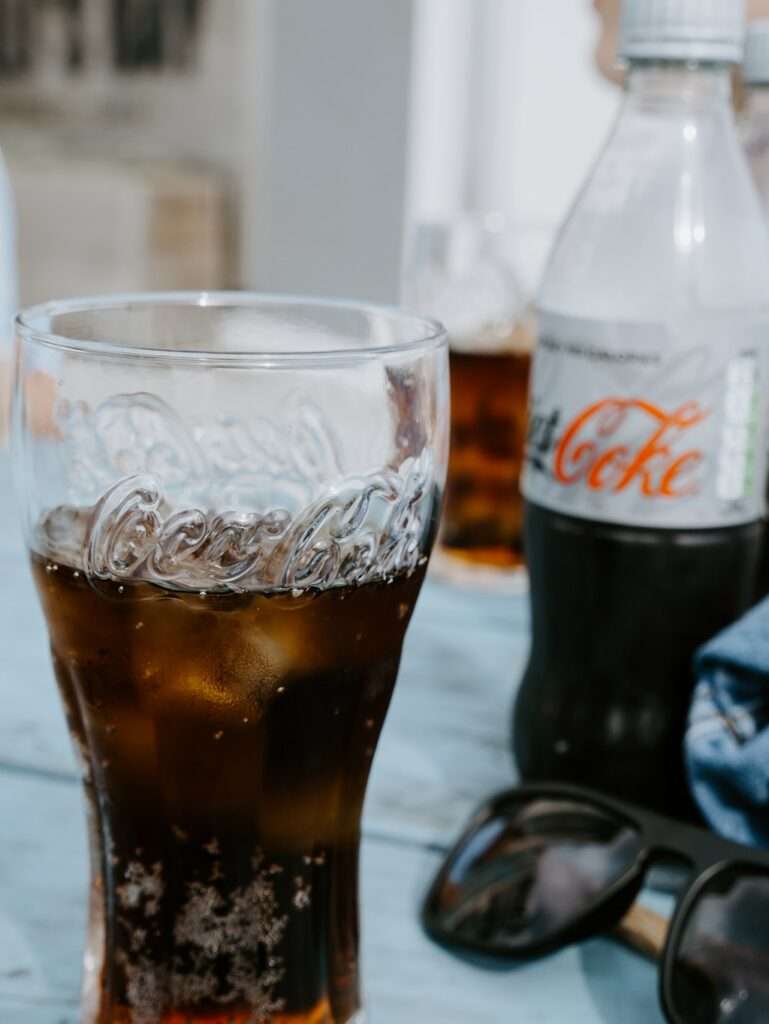We can’t run, we can’t hide. Harmful, toxic chemicals are everywhere. So, what do we do? We need more corporate and governmental action, say experts.
Drinking nine to 14 cans of Diet Coke every day may increase your risk of cancer, according to a recent statement from the World Health Organization (WHO). The news follows several weeks of panicked media headlines regarding the beverage’s aspartame content. “We’re not advising consumers to stop consuming (aspartame) altogether,” said Dr. Francesco Branca, the WHO’s director of nutrition and food safety. “We’re just advising a bit of moderation.”
But while this announcement will likely come as a relief to many, the fact that aspartame is now technically classified as a “possible carcinogen” is representative of a much wider issue. Chemicals are everywhere, and they’re not harmless.

The Diet Coke news came just a few weeks after another concerning announcement regarding public health: almost half of the tap water in the U.S. is contaminated with per- and polyfluorinated alkyl substances (PFAS). Dubbed “forever chemicals,” exposure to PFAS has been linked with a plethora of health issues, including cancer, fertility problems, liver damage, and thyroid disease, but research is still ongoing.
Research suggests PFAS are also in bottled sparkling water, juice, freshwater fish, cow’s milk, breast milk, and even rainwater. “There’s been almost no place scientists have looked where they have not found PFAS,” toxicologist Dr. Jamie DeWitt recently told CNN.
It seems the world has reached a chemical tipping point. In fact, in 2022, an international team of scientists confirmed that chemicals and plastics are now so widespread in our environment, it is no longer possible to accurately predict how many there are or exactly how much damage they are responsible for. But we do know one thing: they’re multiplying.
Where are we at with chemical regulation and restriction?
Around the world, nonprofits and advocacy groups are calling for tighter regulations on the chemicals that permeate every aspect of our existence. And there has been some progress.
Back in 2015, the manufacture and import of perfluorooctanoic acid (PFOA), an industrial surfactant, was phased out in the U.S., after it was identified as a possible carcinogen. And multiple states have also moved to ban PFAS from packaging, firefighting foam, and textiles, reports the Natural Resources Defense Council (NRDC).
Companies have also taken a stand. Outdoor clothing brand Patagonia, for example, is moving toward 100 percent PFAS-free clothing, and in Spring 2023, its water-repellant materials were already 66 percent PFAS-free. “With no set industry-wide goal to eliminate the use of these chemistries, we see this as an opportunity to inspire others,” notes the brand.

The Environmental Protection Agency is also taking steps to limit PFAS, including in tap water, but there is more work to be done, notes the NRDC. “The administration’s response still fails to meet the scale of the crisis with more comprehensive monitoring, definitive regulations, or wide-scale cleanup efforts,” it states.
In Europe, recent reports are also concerning. According to the Guardian, the European Commission is set to break its previous promise to outlaw most hazardous chemicals, bar those that are essential. This would have meant that up to 12,000 substances would have been banned from products, but now this pledge is under threat.
“The Guardian has learned that the EU’s executive is on the brink of a climbdown under heavy pressure from Europe’s chemical industry and rightwing political parties,” reported the newspaper earlier this month, referring to a leaked impact study.
The reports alarmed the European Environmental Bureau, which is the largest network of environmental citizens’ organizations in Europe. Right now, it has more than 180 member organizations in 40 different countries.
“The EU’s failure to control harmful chemicals is written in the contaminated blood of almost all Europeans. Every delay brings more suffering, sickness, and even early deaths,” said the network’s head of chemicals policy, Tatiana Santos.
How to protect yourself from harmful chemicals
This can all feel quite disheartening for those concerned about chemical exposure. But as well as supporting those organizations calling for change, there are a few practical steps consumers can take to help protect themselves.
Firstly, don’t drink nine cans of Diet Coke in a single day. But, of course, that’s the easy part. It’s not so straightforward when it comes to basic everyday requirements, like drinking water.

The EPA recommends reaching out to your local water utility to find out how they are addressing PFAS in drinking water in your area and request that they test the water, too. You can also install filters, which may help to lower PFAS levels.
But also, most importantly, take the opportunity to have your say. “Federal agencies are required to provide an opportunity for public comment when proposing a new regulation and must consider the comments in revising the proposal and issuing a final rule,” notes the EPA. “In carrying out our mission to protect human health and the environment, EPA develops regulations to prevent or to clean up hazardous chemicals released into our air, land, and water, some of which relate to PFAS.”
Find out more about how to give your comments to the EPA here.
Related on Ethos:


